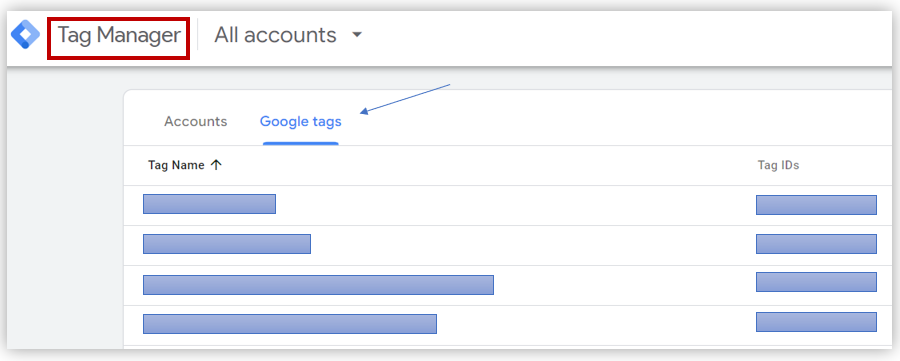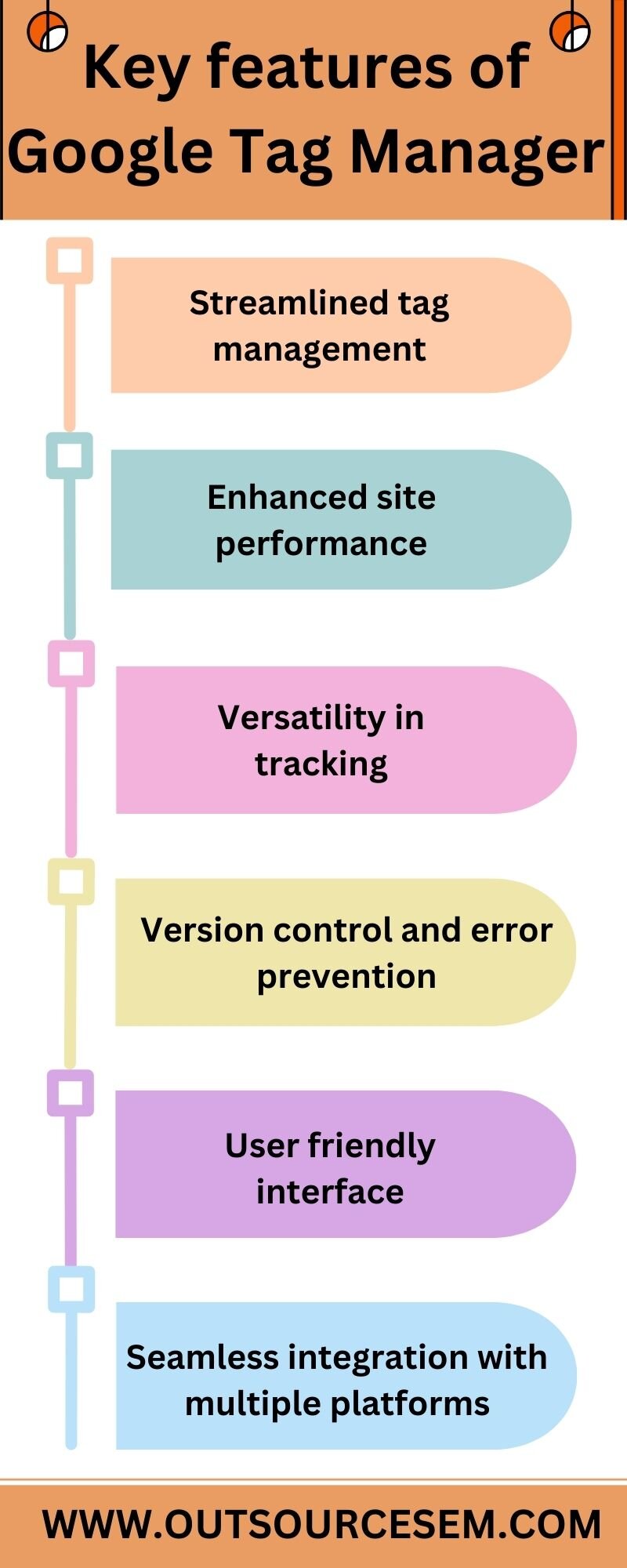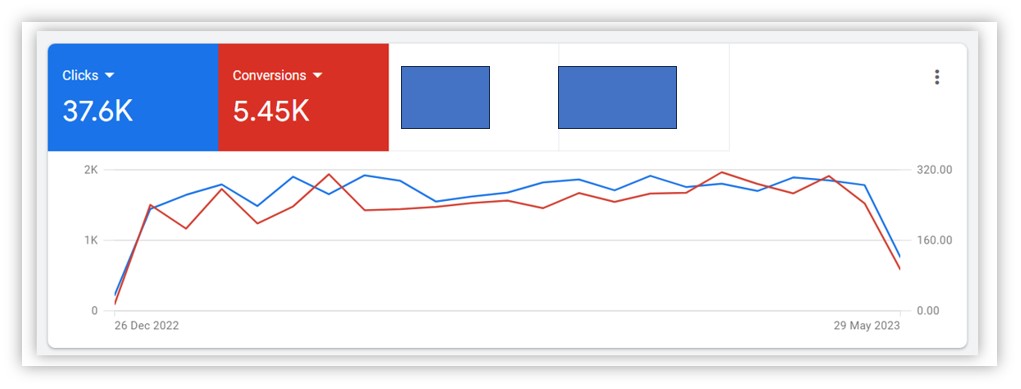In today's world of online marketing, website owners need to utilize every essential tool available for maximum returns. Google offers various vital tools, including Google Ads, Google Analytics, Google Search Console, and Google Tag Manager, which is a tool that website owners and marketers should focus on. With online marketing being different from traditional marketing, user experience is extremely important, and website owners must stay updated with the latest digital marketing trends to improve user engagement, increase website traffic, and much more. Google Tag Manager (GTM) is a powerful and adaptable tool that has completely changed how webpages are managed and optimized. This blog article will cover the core functionality and essential features of Google Tag Manager and how it enables businesses to take control of their online presence.
What is Google Tag Manager?
Google Tag Manager is a user-friendly yet powerful tag management system created by Google. It makes integrating different tracking codes and tags on a website easier without an in-depth knowledge of technology. GTM enables you to manage your tags from a single centralized platform instead of manually inserting code snippets into your website. Google Tag Manager not only simplifies the technical complexities of managing tracking codes but also empowers businesses with flexibility, collaboration, and reliability, making it an indispensable tool for efficient and effective digital marketing and analytics implementation.

Here are some key components of Google Tag Manager:

A. Tags - Google Tag Manager (GTM) revolutionizes website management by simplifying the implementation of essential tracking tools. Tags, the core element of GTM, are snippets of code vital for collecting data from various third-party tools such as Google Analytics and Facebook Pixel. With GTM, users can effortlessly add, edit, or remove tags without manually altering the website's code. This feature is invaluable as it ensures seamless integration of analytics and marketing tools, enhancing the overall functionality of a website.
B. Triggers - Triggers play a pivotal role in GTM, determining the precise conditions under which tags are activated. Events like clicks, form submissions, and pageviews serve as triggers, enabling users to customize their tracking strategies. Furthermore, GTM allows for the creation of custom events, giving businesses unparalleled flexibility in tracking user interactions. Triggers ensure data collection occurs precisely when and where needed, providing accurate insights into user behavior.
C. Variables - The introduction of variables in GTM significantly enhances its capabilities. Variables capture and store crucial information from the website, ranging from clicks and URLsto specific user interactions. These variables can be seamlessly integrated into both tags and triggers, offering unparalleled flexibility in configuring tracking parameters. This customization ensures businesses can tailor their tracking methods to suit their unique requirements, facilitating more in-depth and targeted data analysis.
D. Versioning and rollback - GTM's versioning and rollback feature provides a safety net for website administrators. Versioning and rollback allow users to create multiple container versions, facilitating experimentation and iteration. When changes are ready for deployment, users can publish them with confidence. If unforeseen issues arise after publishing, GTM allows easy rollback to a previous version, ensuring website stability. This functionality is crucial for businesses to maintain a seamless user experience, even amidst significant website updates.
E. Collaboration - The collaborative nature of GTM further enhances its appeal. Collaboration features enable multiple users to work together on a single GTM account with different access levels. This collaborative approach promotes teamwork among marketers, analysts, and developers, fostering a cohesive environment for effective tag implementation and management.
F. Built-in-tags - Additionally, GTM has built-in tags that simplify the setup process for popular services such as Google Analytics and Google Ads. These pre-built tag templates expedite the implementation of essential tracking, allowing businesses to focus on leveraging the insights gained from these tools.

G. Debugging and preview mode - GTM's robust toolkit also includes a debugging and preview mode, allowing users to test and troubleshoot tags before they go live. This feature ensures that tags function as intended, minimizing errors and guaranteeing accurate data collection.
H. Version history and audit trail - A GTM maintains a detailed version history and audit trail, providing users with a comprehensive overview of all changes made within the platform. This transparency not only facilitates accountability but also assists in identifying and resolving any discrepancies in tracking configurations. The version history and audit trail feature is instrumental in ensuring the accuracy and reliability of the data collected, enabling businesses to make well-informed decisions based on trustworthy insights.
Key features of Google Tag Manager
1. Streamlined tag management - Traditionally, integrating monitoring tools or scripts on a website required painstaking source code changes. This procedure is not only simplified but also made amazingly efficient using Google Tag Manager. The software provides a visually appealing interface via which tags may be controlled centrally. GTM allows marketers and website administrators to add, amend, and update tags without needing backend scripting, whether it's a new analytics tool, a marketing pixel, or a custom script. This simplicity of use promotes agility, allowing for rapid adaptation to changing marketing tactics and analytical needs.
2. Enhanced site performance - In today's digital world, website speed is critical. According to studies, visitors expect websites to load in a couple of seconds. Excessive tags and scripts can degrade site speed, resulting in greater bounce rates and dissatisfied users. GTM solves this problem by loading tags sequentially. Tags that load concurrently do not obstruct or hinder the loading of other components on the page. GTM adds to a seamless and quick user experience by ensuring that tags execute independently without interfering with the loading process, hence improving bounce rates and user engagement.

3. Versatility in tracking - The versatility of GTM to handle a wide range of tracking options makes it a helpful tool for marketers. GTM caters to a wide range of monitoring requirements, from essential tools like Google Analytics and AdWords conversion tracking to highly specialized solutions incorporating customized HTML and JavaScript tags For example, businesses may measure user activities, including form submissions, button clicks, video views, downloads, and more. Furthermore, GTM enables event tracking without the need for advanced code implementations. This adaptability enables firms to get precise insights into user behaviour, allowing data-driven decision-making without requiring substantial technological skills.
4. Version control and error prevention - GTM has a powerful version control system that allows users to create, evaluate, and publish multiple versions of their tags and configurations. This capability is crucial since it will enable marketers to monitor changes, return to prior versions if problems emerge, and efficiently cooperate across teams. GTM also has advanced debugging tools. These tools allow users to test and debug tags before deployment, dramatically lowering the risk of problems. The ability to detect and correct issues before they affect the website promotes a positive user experience and reliable data collecting.
5. User friendly interface - Google Tag Manager is a game changer for companies and marketers, including individuals who aren't technical experts. Its user-friendly interface and pre-designed themes make tag management simple. Marketers can create, modify, and update tags without learning computer languages. This empowerment saves time & resources and promotes a self-reliant culture inside marketing teams. Professionals may use GTM to experiment with various monitoring tools and marketing scripts on their own, promoting innovation and enabling the execution of creative marketing tactics.
6. Seamless integration - The beauty of GTM is its ability to interface with a wide range of Google products. This integration provides unrivaled benefits for firms firmly embedded in the Google ecosystem. GTM seamlessly interacts with Google Analytics, Google Ads, and other Google marketing services. This collaboration guarantees that data flows effortlessly between technologies, delivering a complete picture of marketing performance. Furthermore, GTM is not confined to Google creations. It is intended to be adaptable, supporting various third-party integrations. GTM may be smoothly linked with multiple third-party programs, including CRM systems, social networking platforms, and email marketing tools. This adaptability enables firms to build a unified digital marketing environment adapted to their individual requirements.GTM's seamless interfaces simplify the complexity of digital marketing by centralizing data and automating operations, allowing firms to focus on their core goals and objectives.
How GTM transforms digital marketing strategies?
I. Enhanced data accuracy: Data accuracy is the base upon which effective marketing tactics are constructed in the digital environment. Google Tag Manager, which rigorously tracks user interactions and website activity, plays a critical part. GTM provides marketers with a goldmine of vital data by carefully tracking user clicks, scrolling, form submissions, and other engagement indicators. This fine-grained data not only gives a thorough picture of user activity but also reveals patterns and trends that would otherwise go unreported. Businesses may make educated judgments based on genuine user activities if they have the correct information. GTM's data accuracy becomes the compass directing firms toward optimal marketing tactics, eventually leading to improved user experience and greater customer happiness, from recognizing popular website features to comprehending the customer journey.
Furthermore, GTM's ability to link smoothly with analytics systems such as Google Analytics offers a comprehensive picture of user interactions. Businesses acquire extensive insights into consumer demographics, interests, and preferences by merging data from many sources. This in-depth knowledge serves as the foundation for targeted marketing campaigns, allowing firms to adjust their content, offers, and user experiences to specific audience segments, optimizing the effect of their marketing efforts.
As for your PPC ad campaign, you focus on conducting PPC keyword research and then create ad copies, engaging headlines, etc., that lure the target audience into clicking on the ad. To track conversion analysis, it is essential to conduct a PPC audit and prepare a PPC report that shows the performance of crucial PPC metrics like cost-per-click, impression share, search imp lost(rank), search imp lost(budget), etc. In the same way, you need to focus on enhanced data accuracy that helps in proper planning & strategy to improve digital marketing strategies.
II. Personalized user experience: Generic marketing methods are no longer effective in the age of digital personalisation. Google Tag Manager, for example, enables advertisers to build customized user experiences based on individual habits and interests. Marketers can uncover trends in user behavior by evaluating data obtained by GTM, such as frequently visited pages, favored items, or content categories. With this information, they may create targeted marketing efforts that connect with people on a personal level. Personalization entails offering relevant material, product suggestions, and promotions at the correct time and through the proper channels, in addition to addressing people by name. Marketers may successfully segment their audiences because of GTM's ability to gather user data. Businesses may send customized messaging, increasing user engagement and fostering brand loyalty by knowing what various user groups want.
III. A/B testing and conversion rate optimization: Digital marketing thrives on experimentation, and Google Tag Manager acts as the testing ground for precise a/b tests and conversion rate optimization studies. GTM simplifies the process of releasing various iterations of a website or app component, enabling marketers to compare performance indicators and quickly discover successful variants.
Marketers may test various headlines, call-to-action buttons, layouts, or even complete homepage designs thanks to a/b testing, which is made possible by GTM. Businesses may determine which version best appeals to their audience by tracking user interactions with different variants, which enables them to make data-supported design and content decisions. This iterative testing procedure helps organizations match their products with consumer expectations by optimizing conversion rates and revealing insights into user preferences.
IV. Efficient campaign tracking: Effective campaign tracking is essential to the success of any digital marketing project. The seamless integration of Google Tag Manager with Google Analytics not only makes monitoring easier but also offers in-depth analysis of campaign results. Businesses may modify their marketing tactics in real-time by constantly tracking metrics like click-through rates, bounce rates, and conversion statistics. By effectively allocating the marketing budget, this dynamic strategy makes sure that ROI is maximized. Marketers can easily discover high-performing channels due to GTM's ability to track campaigns, allowing them to concentrate resources on projects that have the most effect and ensure a greater return on investment.

Conclusion
Google Tag Manager is an exemplary instance of efficiency in the quick-moving digital world, enabling companies to remain adaptable, data-driven, and customer-focused. It is a vital tool for both marketers and website owners because of its user-friendly layout, robust capabilities, and smooth connections. Businesses can maximize their online presence, encourage meaningful conversions, and achieve sustainable development in the cutthroat digital environment by using the power of GTM.
Google Tag Manager helps give account access to multiple people with different levels of viewing, editing, and publishing privileges. The advantages of Google Tag Manager are that it helps create tags, easy integration, faster loading time, display of fired tags, etc. If you find growing in your digital marketing agency a challenging task, you can contact a digital marketing agency. You can outsource SEO services, outsource PPC services, avail of white label SEO services, white label PPC service, offshore PPC service, campaign analysis services, etc. and increase web presence. The experts at a digital marketing agency have expertise in SEO audit, PPC audit, running mobile ads, video ads, display ads, search ads, small business SEO, enterprise SEO, detox & penalty removal, email marketing, digital analytics, backlink analysis, link building, SEO analytics, and much more. So, if you haven't already embraced Google Tag Manager's marvels, it's time to do so to realize the potential of your online projects fully. By hiring our digital marketing experts you can avail various other services for your businesses like lawyer SEO, small business SEO, HVAC SEO, painting SEO, roofing SEO and much more. All these services can assist you in bringing maximum visibility to the website and thereby profit to your business.
References:
. What is Google Tag Manager & how does it work?
. Google Tag Manager: A simple tutorial
